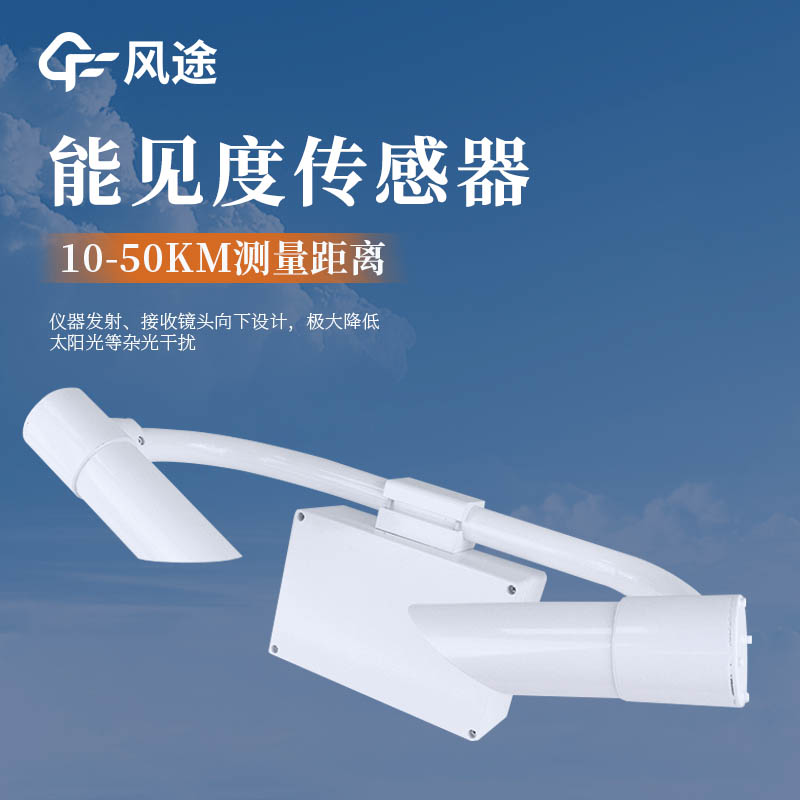Shandong Fengtu IOT Technology Co., Ltd
Sales Manager:Ms. Emily Wang
Cel,Whatsapp,Wechat:+86 15898932201
Email:info@fengtutec.com
Add:No. 155 Optoelectronic Industry Accelerator, Gaoxin District, Weifang, Shandong, China

Sales Manager:Ms. Emily Wang
Cel,Whatsapp,Wechat:+86 15898932201
Email:info@fengtutec.com
Add:No. 155 Optoelectronic Industry Accelerator, Gaoxin District, Weifang, Shandong, China
time:2024-12-09 09:31:51 source:Weather Station viewed:334 time
In meteorological observation work, visibility is a key element. It intuitively reflects the transparency of the atmosphere and is related to many fields such as traffic travel, aviation and shipping safety. Briefly speaking, visibility refers to the maximum distance at which a person with normal vision can clearly distinguish a target object from its background.
Nowadays, the determination of visibility mainly relies on two observation methods, namely instrument-based and manual ones. Instrument-based observation is efficient and accurate. Common ones include transmissive Visibility detectors and scattering Visibility detectors. When the transmissive Visibility detector is working, the transmitter emits parallel light towards the receiver at a fixed distance away. The dust and water vapor particles in the atmosphere will cause the attenuation of light. The instrument will conduct precise calculations based on the attenuation degree combined with the built-in calibration coefficients and quickly give the visibility value. It can often be seen around airport runways, safeguarding the take-off and landing of flights. The scattering Visibility detector is small and flexible. It operates based on the principle of light scattering. The built-in light source emits light, and when it encounters particles in the air, scattering occurs. The detector captures the scattered light and converts it into an electrical signal. After some processing, accurate visibility data will be obtained. It is favored by many meteorological observation stations.
Although manual observation is a bit more traditional, it is also indispensable. During the day, observers will select open areas with a wide field of view and lock onto target objects that meet the requirements, such as clearly outlined and dark-colored mountains or highly recognizable buildings. As the amount of dust and smoke in the air gradually increases and the shape and color of the target object gradually become blurred, the observer records the distance between it and the observation point to estimate the visibility. However, manual observation is affected by subjective factors. Different observers have different visual acuities, and the results may have deviations. At night, lights become the key observation objects. Parameters such as light intensity need to be known in advance. Lighthouses are typical targets. If the light is dim and the outline is blurry, observers will calculate the current visibility according to their experience and light information to safeguard the safety of nighttime travel. The two observation methods have their own advantages and disadvantages and complement each other, jointly ensuring the accuracy of visibility data.

The Portable Weather Station is a high-precision comprehensive ground observation device with mobile characteristics. It is portable, quick to install, and boasts high observation accuracy, thus being widely used in the field of meteorological monitoring.This device can accurately measure multiple b...
In an airport's operational system, visibility is one of the factors affecting aviation safety and efficiency. The installation of airport Visibility Sensors is precisely to monitor this critical meteorological data accurately and in real time, providing a scientific basis for aviation activitie...
Highway visibility monitoring is a crucial part of ensuring road traffic safety. With the development of mobile Internet technology, the Road Weather Information System has achieved a functional leap from the computer terminal to the mobile phone terminal.The traditional computer - based monitoring...
The deployment and use of greenhouse sensors is a very important and critical part of my country's agricultural production at present. Due to the complex and changeable environmental conditions of the greenhouse, it is necessary to select and arrange reasonably according to different needs in th...